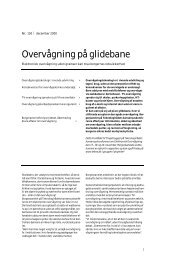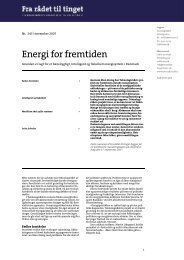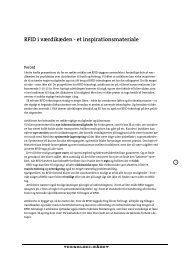Energi i fremtiden - globale, regionale og nationale ... - Teknologirådet
Energi i fremtiden - globale, regionale og nationale ... - Teknologirådet
Energi i fremtiden - globale, regionale og nationale ... - Teknologirådet
Create successful ePaper yourself
Turn your PDF publications into a flip-book with our unique Google optimized e-Paper software.
Demand<br />
In Table 3.1, the Outlook presents oil demand by region and for some large countries. It is surprising to<br />
see that Russia will have an increase of only 1.6 percent, matching the world average. Russia is the only<br />
major country in the world that is energy independent and can stay independent for many years to come.<br />
The population has adequate education and the potential for economical growth is great, being no doubt<br />
at least comparable with that in China and India, namely around 3.0 percent. The IEA cannot admit to<br />
such an internal growth rate because it would limit exports, undermining the possibility of meeting the<br />
indicated needs of the rest of the world. A 3.0 percent increase for Russia from today’s 2.7 Mb/d would<br />
give a consumption of 6.2 Mb/d in 2030 compared with the 4.2 Mb/d proposed by the IEA. It is evident<br />
that the IEA has had to massage its input assumptions to deliver a pre-desired outcome.<br />
Reserves<br />
Shell’s spectacular downward revision of reserves during 2004 has raised awareness of the general issue<br />
global oil reserve reporting. We know that oil reserves are far from evenly distributed, and we know that<br />
oil fields have widely different sizes. It is not surprising that it has been easier to find a giant field with<br />
more than 500 million barrels than smaller fields. The trend of discovery of giant fields is revealing, being<br />
illustrated in figure 2.<br />
Figure 2.Discovery in giant oilfields per decade and the number of such fields [5].<br />
The bulk of the World’s oil lies in these giant fields. Since the world has now been very thoroughly explored,<br />
it is inconceivable that a dramatic change in the trend will occur in the 21 st Century. Adding the<br />
smaller fields and back-dating the revisions gives the plot as published by ExxonMobil [6]. In figure 3 we<br />
present backdated discovery t<strong>og</strong>ether with consumption.<br />
52<br />
Oil discovery [Gb/decade]<br />
and Number of Fields<br />
300<br />
250<br />
200<br />
150<br />
100<br />
50<br />
0<br />
1850-<br />
1899<br />
Giant Oil Field Discovery per Decade<br />
Oil Discovery<br />
Number of Fields<br />
1900-<br />
1909<br />
1910-<br />
1919<br />
1920-<br />
1929<br />
1930-<br />
1939<br />
1940-<br />
1949<br />
1950-<br />
1959<br />
1960-<br />
1969<br />
1970-<br />
1979<br />
1980-<br />
1989<br />
1990-<br />
1999

















